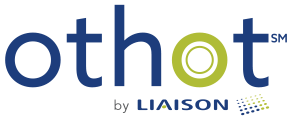It’s past May 1st (National Decision Day) and hopefully your enrollment class is looking good for the upcoming school year. Take a minute and breathe a sigh of relief. For many of Othot’s customers, the past few months were stressful, but well worth the effort. If you are not an Othot customer, this time may have been more stressful since you didn’t have an advanced analytics platform at your disposal.
Whether you hit your enrollment goal or are looking to improve other enrollment metrics for future classes, Othot has a solution to help you. Over the next few weeks, I’ll be presenting examples that show how our customers used insights from Othot’s advanced analytics platform to meet enrollment goals. These examples include the impact of visits and financial aid on likelihood to enroll, prospect list evaluation and a few others. But to start, I’ve chosen a story about admitted student visits because it is relevant right now.
As a general format for this post and the others in our impact series, we’ll look at the 1) insight that was surfaced, 2) how we helped our customer change behavior, 3) the outcome that was delivered, and 4) the next steps we are taking for continuous improvement.
Surface Insights
We confirmed in March for one of our larger institutions that it could already achieve its enrollment goals because of the quantity and quality of their applicants (this was possible through Othot’s "Projected Enrollment by Lifecycle Phase" ). With that information, the institution shifted its efforts to evaluating the right mix of students to admit and ultimately covert to deposits. Through Othot’s models, we surfaced an insight around the significance of the accepted student visit and how this variable can create a 30% lift in a student’s likelihood to enroll. We coupled this insight with the institution’s current list of registrants for the upcoming accepted student visits planned throughout the spring. Using Othot’s platform and the “What-if” functionality, we ran an analysis to identify the impact in aggregate predicted enrollment and evaluate if the school could meet their targets based on the forecasted activities.
Change Behavior
How did the evaluation go? Based on the results of the analysis, we proved to the institution 1) it already had enough admitted students in its population to potentially meet its goal and 2) as long as the registered accepted students attend the upcoming visits, the institution could improve the quality of its population to meet its enrollment goals. Our customer redirected efforts, and through additional phone calls and outreach, the school confirmed registrants were planning to attend and focused resources to provide successful visits.
Deliver Outcomes
As accepted students visited campus throughout the spring, the institution provided new data to Othot to evaluate the new aggregate predicted enrollment. With each week and each additional visit, we helped our customer evaluate its trend to its target goal. The constant, dynamic updates allow Othot and the customer to identify leading indications they were on track to achieve its enrollment goal. And now that we are past May 1st, what is the final outcome? The student conversion from admits to deposits was successful and the institution was able to achieve its overall enrollment goal. While meeting the overall enrollment target was paramount, the school also used the Othot platform to evaluate the predicted shape of the class and identify that it was on track to grow its academic quality, diversity, and out-of-state students.
Continuously Improve
While our customer was successful in achieving many of its goals this year, there are other facets to improve. Critically, while the deposit goals have been achieved, we want to ensure the predicted enrollment for fall is still achieved. Our customer is now using the platform to evaluate high-risk students for melt. This is a concern for many schools and Othot can support summer melt mitigation through its modeling.
In addition, our customers are always striving to do more with less. Over the next few months, we’ll be working with this institution to improve its financial aid strategy to help the school better allocate aid and reduce spend for the next enrollment class. Othot’s "Sensitivity" feature makes it easy to analyze aid awards and develop policies, and Othot’s upcoming product release will provide institutions the ability to "Rewind" its students to perform additional testing.
Whether you missed your enrollment goal or are looking to improve other enrollment metrics, Othot has a solution for you. As always, if you would like to learn more or start gaining value for yourself and your institution, please reach out to me at zjvarga@othot.com.

Zach Varga




